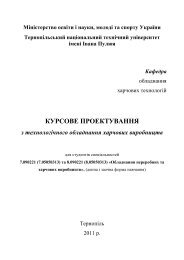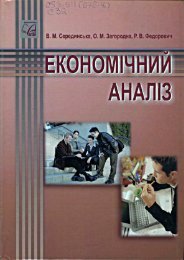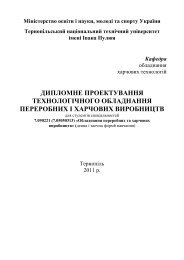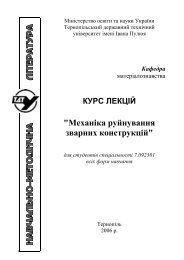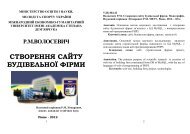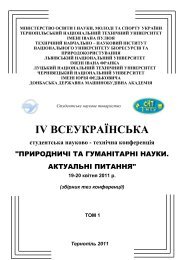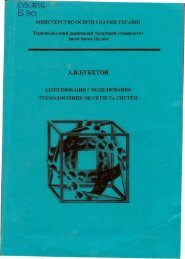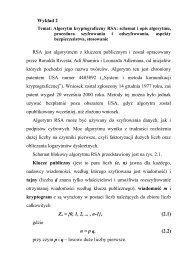Experiment M2 DETERMINATION OF FREE FALL ... - ELARTU
Experiment M2 DETERMINATION OF FREE FALL ... - ELARTU
Experiment M2 DETERMINATION OF FREE FALL ... - ELARTU
Create successful ePaper yourself
Turn your PDF publications into a flip-book with our unique Google optimized e-Paper software.
Student’s name _____________________________________________________<br />
<strong>Experiment</strong> <strong>M2</strong><br />
<strong>DETERMINATION</strong> <strong>OF</strong> <strong>FREE</strong> <strong>FALL</strong> ACCELERATION<br />
BY METHOD <strong>OF</strong> PHYSICAL PENDULUM<br />
Purpose of the experiment: to study oscillation of the physical pendulum and to<br />
determine acceleration of the free fall by method of physical pendulum.<br />
1 EQUIPMENT<br />
1. Physical pendulum.<br />
2. Millimeter scale.<br />
3. Stop-watch.<br />
2 THEORY<br />
2.1 From the law of universal gravitation it follows that on a body lifted above the<br />
ground on the height h the force<br />
mM<br />
γ mg,<br />
2 =<br />
(2.1)<br />
R + h<br />
( )<br />
E<br />
is exerted, where a quantity gr is free fall acceleration, γ=6,67⋅10 -11 m 3 kg -1 s -2 is gravitational<br />
constant, m is mass of body, M is mass of Earth (M=5,98⋅10 24 kg), R E is the radius of Earth.<br />
In a vector form the attractive power can be written down as<br />
r r<br />
F = mg;<br />
(2.2)<br />
F r and gr are directed towards the center of Earth. For a body near the ground, h
Determination of free fall acceleration by method of physical pendulum<br />
pendulum from equilibrium position. We choose the position of stable equilibrium of<br />
pendulum as an origin for potential energy magnitude. After differentiation Eq. (2.4) with<br />
respect to time we have<br />
I wdw<br />
+ mgL sinada<br />
= 0 . (2.5)<br />
2 2<br />
As dα=ωdt, and angular acceleration is equal to dω / dt = d α / dt , instead of Eq.<br />
(2.5) we have:<br />
2<br />
d a<br />
I + mgL sina<br />
= 0<br />
2<br />
. (2.6)<br />
dt<br />
Let us divide both sides of equation (2.6) on I , introduce notation<br />
2 mgL<br />
ω<br />
0<br />
=<br />
(2.7)<br />
I<br />
and consider the case of small deviations from position of equilibrium (sinα≅α). Then from<br />
Eq. (2.6) we obtain:<br />
2<br />
d a 2<br />
+ w<br />
0<br />
a = 0<br />
2<br />
. (2.8)<br />
dt<br />
The solution of equation (2.8) is:<br />
a = a0 cos( w0t<br />
+ j)<br />
, (2.9)<br />
where α 0 is a maximal deviation angle of pendulum from position of equilibrium (amplitude<br />
of oscillations) ω 0 is angular frequency, ϕ is an initial phase (if in the initial moment of time<br />
a pendulum was maximally declined from position of equilibrium then ϕ=0).<br />
Period of oscillation for the physical pendulum is<br />
2p<br />
I<br />
T = = 2p<br />
. (2.10)<br />
w<br />
0<br />
mgL<br />
From the formula (2.10) it is possible to determine the free fall acceleration<br />
4π I<br />
g =<br />
2 . (2.11)<br />
T mL<br />
So we have to determine the period of vibrations of rod and calculate its moment of inertia in<br />
order to calculate g.<br />
3 DESCRIPTION <strong>OF</strong> EXPERIMENTAL APPARATUS<br />
The pendulum used is a rod with mass m and length l.<br />
For a rod, the moment of inertia about an axis, that passes<br />
through the center of mass, is given by formula:<br />
1 I<br />
2<br />
0 = Ml , (3.1)<br />
12<br />
and the moment of inertia about an axis that passes through<br />
an upper end may be found from parallel axis theorem :<br />
2<br />
⎛ l ⎞ 1 2<br />
= I<br />
0<br />
+ m⎜<br />
⎟ Ml , (3.2)<br />
I =<br />
⎝ 2 ⎠ 3<br />
where we have used that the distance from the axis of rotation<br />
to the center of mass is<br />
l<br />
L = . (3.3)<br />
2<br />
Taking into account expressions (3.1)-(3.3), it is<br />
L<br />
α<br />
l<br />
m<br />
Figure 3.1<br />
PDF created with pdfFactory Pro trial version www.pdffactory.com
Determination of free fall acceleration by method of physical pendulum<br />
possible to determine acceleration of the free falling from equation (2.11) to be<br />
2<br />
8 l<br />
g = p ⋅<br />
2 . (3.4)<br />
3 T<br />
This is a computation formula for determination of the free fall acceleration.<br />
4 PROCEDURE AND ANALYSIS<br />
4.1 Determine the length of rod l.<br />
4.2 Determine the period T of oscillations of the physical pendulum. For that, use a stopwatch<br />
to measure time t of some number n (specified by teacher) of oscillations and<br />
calculate T from formula<br />
t<br />
T = .<br />
n<br />
4.3 Repeat the experiment 3 times. Find the average value of T.<br />
4.4 Calculate the value of the free fall acceleration from equation (3.4).<br />
4.5 Estimate the errors of measurements and calculations.<br />
4.6 Express results of the calculation in the form g = g m<br />
± ∆g<br />
m and specify the value of<br />
relative error ε.<br />
4.7 Fill the table 4.1 with results of experiments and calculations.<br />
Table 4.1<br />
1<br />
2<br />
3<br />
Mean<br />
value<br />
l,<br />
m<br />
Δl,<br />
m<br />
T,<br />
s<br />
ΔТ,<br />
s<br />
g,<br />
m/s 2<br />
Δg,<br />
m/s 2 e,<br />
%<br />
PDF created with pdfFactory Pro trial version www.pdffactory.com




